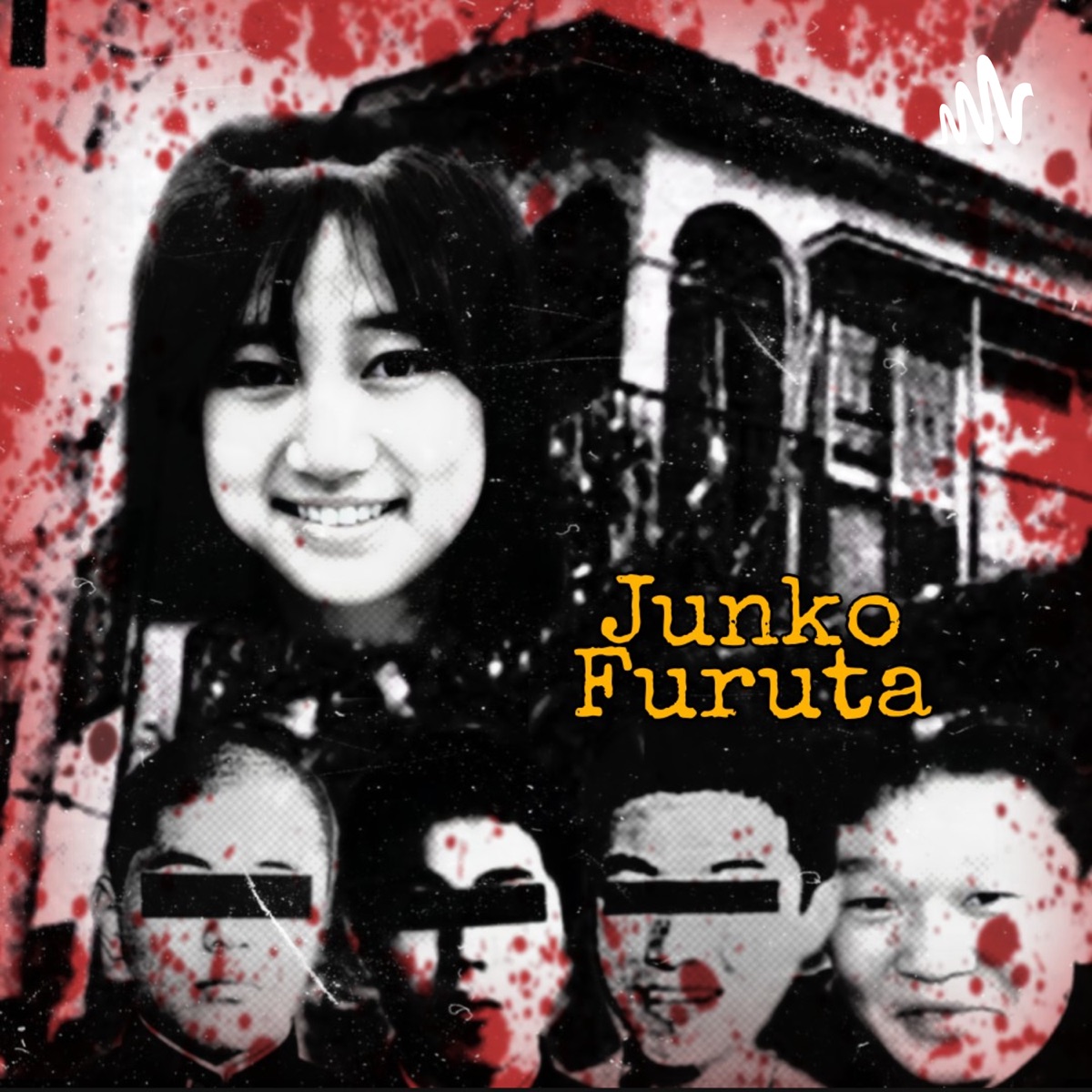Junko Furuta Case Story: The Dark Truth Behind Japan's Most Infamous Crime
Hey there, history and crime enthusiasts! If you're into chilling stories that send shivers down your spine, then buckle up because we're diving deep into one of Japan's darkest moments. The Junko Furuta case is not just another crime story—it's a haunting reminder of the horrors that can unfold when humanity takes a backseat. Brace yourself, because this is going to get heavy, but it’s a story that needs to be told.
This infamous case has left an indelible mark on Japanese society and the global stage. The details are chilling, the consequences profound, and the lessons learned are something every generation should reflect upon. But before we dive headfirst into the depths of this tragedy, let’s set the stage and understand why this case continues to haunt people even today.
Imagine a world where innocence is shattered in the blink of an eye. That’s exactly what happened to 14-year-old Junko Furuta, whose story has become synonymous with one of the most heinous crimes in modern history. Let’s explore the dark truth behind this case and uncover the layers of despair that unfolded.
- Melody Marks 10 Facts You Didnt Know 2024 Update
- Hdhub4u Is Free Movie Streaming Safe Find Alternatives More
Table of Contents
- Biography of Junko Furuta
- The Background Leading to the Crime
- Crime Details: What Really Happened?
- Who Were the Perpetrators?
- The Attempted Cover-Up
- The Pursuit of Justice
- The Aftermath: Impact on Society
- Psychological Insights
- Lessons Learned from the Junko Furuta Case
- Final Thoughts and Reflections
Biography of Junko Furuta
Before we get into the gory details, it’s important to humanize Junko Furuta, the young girl at the center of this tragedy. She wasn’t just a statistic or a name in a history book—she was a living, breathing person with dreams and aspirations. Here's a quick look at her life:
| Full Name | Junko Furuta |
|---|---|
| Date of Birth | November 13, 1966 |
| Age at the Time of the Incident | 14 years old |
| Hometown | Nishinomiya, Japan |
| Education | Student at a local junior high school |
| Hobbies | Playing the piano, reading, and spending time with friends |
Junko was a regular teenager, living her life like any other kid her age. Little did anyone know that her life would become a chilling tale of tragedy that would haunt Japan for decades.
The Background Leading to the Crime
Let’s rewind to November 25, 1988, in Nishinomiya, Japan. This was a seemingly ordinary day until it turned into a nightmare. Junko Furuta, a 14-year-old girl, was walking home from her badminton practice when she crossed paths with four teenage boys. These boys, who were between the ages of 16 and 17, were looking for trouble—and they found it in Junko.
- Dana Perinos Husband Health Battles Her Loving Goodbye
- Ronnie Mcnutt The Army Veteran Viral Tragedy Explained
What started as a random encounter quickly escalated into something far worse. The boys abducted Junko and took her to an abandoned house where they held her captive for over a month. During this time, she endured unimaginable horrors that no human being should ever have to face.
Why Did This Happen?
Understanding the motives behind such a heinous crime can be difficult, but experts point to a mix of factors. The boys were reportedly seeking thrills and a sense of power. They were influenced by violent media and a lack of moral guidance, which ultimately led them down a dark path. But let’s not jump to conclusions—there’s more to this story than meets the eye.
Crime Details: What Really Happened?
Alright, now we’re getting into the nitty-gritty. The four boys held Junko captive for 44 days in an abandoned house. During this time, they subjected her to unimaginable physical and psychological torture. She was beaten, burned, and sexually assaulted repeatedly. The level of brutality was so extreme that it’s hard to comprehend how anyone could commit such acts.
One of the most chilling aspects of the case is that the boys documented their crimes. They took photos and videos of their atrocities, almost as if they were proud of what they had done. These images were later used as evidence in court, painting a vivid picture of the horrors Junko endured.
Breaking It Down
- Duration: 44 days of captivity
- Location: An abandoned house in Nishinomiya
- Acts of Violence: Physical and sexual abuse, torture, and more
- Documentation: Photos and videos of the abuse
It’s hard to wrap your head around the sheer audacity of these boys. They didn’t just commit a crime—they turned it into a sick game, documenting every moment like some twisted trophy.
Who Were the Perpetrators?
Let’s talk about the four teenage boys who committed this atrocity. They were all from different backgrounds, but one thing they had in common was a lack of empathy. Here’s a brief overview:
- Boy A: The ringleader, known for his violent tendencies
- Boy B: A follower who sought approval from his peers
- Boy C: The youngest, but equally involved in the crimes
- Boy D: A quiet individual who went along with the group
What’s fascinating—and terrifying—is how easily these boys slipped into their roles. They weren’t hardened criminals; they were just kids who made a series of horrific choices. But what drove them to such extremes?
Psychological Profiles
Experts have speculated that the boys were influenced by a toxic mix of factors, including:
- Exposure to violent media
- A lack of parental guidance
- Peer pressure and the desire to fit in
- Underlying psychological issues
While we can’t fully understand their motivations, it’s clear that something went terribly wrong in their lives to lead them down this dark path.
The Attempted Cover-Up
When Junko Furuta finally passed away on December 28, 1988, the boys didn’t report her death to the authorities. Instead, they attempted to cover it up by wrapping her body in plastic and leaving it in a river. They even went so far as to call her family and pretend that she was still alive, demanding ransom money.
This attempt at a cover-up only prolonged the agony for Junko’s family, who were left in the dark about her fate. It wasn’t until her body was discovered on December 31, 1988, that the truth began to unravel.
Why the Cover-Up?
The boys were terrified of the consequences of their actions. They knew what they had done was wrong, but instead of seeking redemption, they chose to double down on their crimes. This decision only added to the tragedy, as it delayed justice for Junko and her family.
The Pursuit of Justice
When the case finally came to light, the Japanese legal system was faced with a dilemma. The boys were all minors at the time of the crime, which meant they couldn’t be tried as adults. This sparked a national debate about the age of criminal responsibility and the effectiveness of the juvenile justice system.
In the end, all four boys were arrested and sentenced to varying terms in juvenile detention centers. However, many felt that the punishment didn’t fit the crime. The ringleader, Boy A, was sentenced to 15 years in detention, while the others received lighter sentences.
Public Reaction
The public was outraged by the leniency of the sentences. Many believed that the boys deserved harsher punishments, given the severity of their crimes. This case highlighted the flaws in the Japanese legal system and sparked calls for reform.
The Aftermath: Impact on Society
The Junko Furuta case had a profound impact on Japanese society. It forced people to confront uncomfortable truths about the state of their communities and the values being instilled in the younger generation. Here are some of the key takeaways:
- Reform of Juvenile Justice: The case led to changes in the way minors are prosecuted in Japan.
- Increased Awareness: It brought attention to issues like bullying, peer pressure, and exposure to violent media.
- Memorialization: Junko’s story has been immortalized in books, films, and documentaries, ensuring that her memory lives on.
While nothing can bring Junko back, her story has served as a catalyst for change. It’s a reminder that even in the darkest moments, there’s an opportunity for growth and reflection.
Psychological Insights
From a psychological perspective, the Junko Furuta case raises important questions about human behavior. How could four teenagers commit such a heinous crime? What drives someone to cross the line from ordinary teenager to cold-blooded criminal?
Experts suggest that factors like peer pressure, a lack of empathy, and exposure to violence can all contribute to such behavior. It’s a complex web of influences that’s difficult to untangle, but understanding these factors is crucial if we want to prevent similar tragedies in the future.
Key Psychological Factors
- Group dynamics and conformity
- The impact of violent media on young minds
- The role of parental guidance and education
By examining these factors, we can gain a deeper understanding of the forces that shape human behavior—and hopefully prevent future atrocities.
Lessons Learned from the Junko Furuta Case
So, what can we learn from this harrowing tale? Here are a few key takeaways:
- Education and Awareness: It’s crucial to educate young people about the consequences of their actions and the importance of empathy.
- Reform of the Legal System: The case highlighted the need for a more effective juvenile justice system that balances rehabilitation with accountability.
- Community Responsibility: We all have a role to play in creating safe and supportive communities where such crimes are less likely to occur.
The Junko Furuta case is a stark reminder of the fragility of human life and the importance of fostering a culture of respect and understanding. It’s a story that demands our attention and action.
Final Thoughts and Reflections
As we wrap up this exploration of the Junko Furuta case, it’s important to reflect on the broader implications of this tragedy. The case serves as a chilling reminder of the dark side of human nature and the importance of vigilance in our communities.
While the details of this case are undeniably disturbing, they also offer an opportunity for growth and reflection. By learning from the past, we can work towards a future where such atrocities are less likely to occur.
So, what’s next? If you’re feeling moved by this story, consider taking action. Share it with others, engage in discussions about juvenile justice and crime prevention, and support organizations that work towards creating safer communities. Together, we can honor Junko’s memory by striving for a better world.
And hey, if you’ve made it this far, give yourself a pat on the back. You’ve just delved into one of the most harrowing stories in modern history. But remember, every dark cloud has a silver lining—and the lessons we learn from stories like this can help us build a brighter future. Keep shining, folks!
- What Is Charmsukh Discover The Ullu Series Streaming Now
- James Pietragallos Upside Down Podcast Network Launch Net Worth

Junko Furuta Case (1988) JunkoFuruta tagalogtruecrimestories

Shorties 73 Junko Furuta Japan's Most Infamous Murder from

Junko Furuta Podcast Podtail